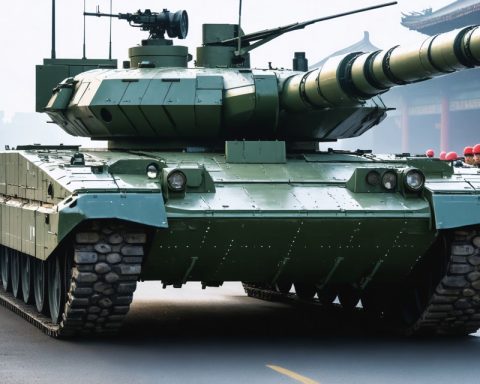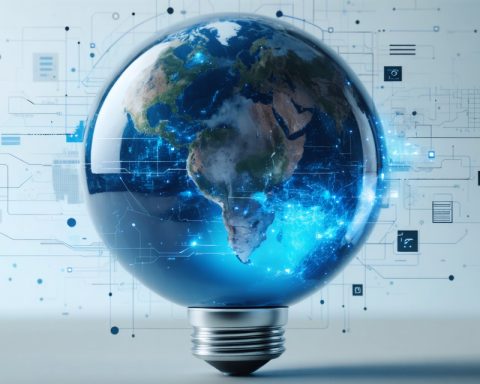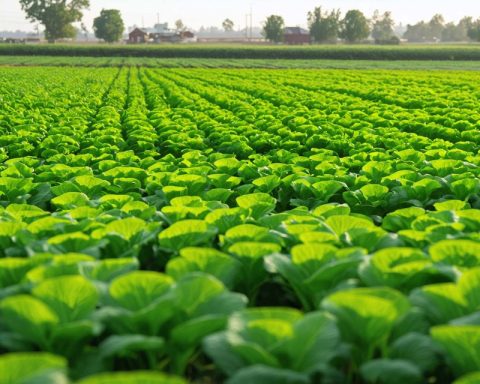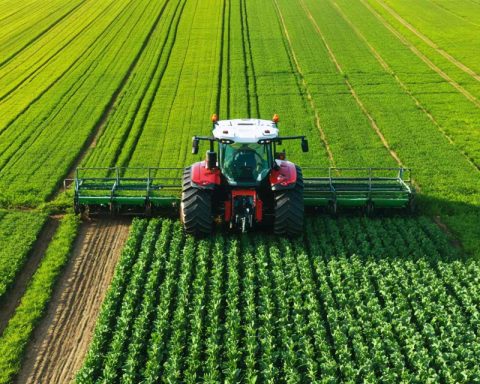- Drones revolutionize agriculture by providing farmers with high-tech tools for precision and efficiency.
- Equipped with advanced sensors and cameras, drones deliver real-time data on soil conditions, crop health, and pest infestations.
- Drones allow for targeted interventions, optimizing resources, boosting yields, and saving time and labor.
- Drones enable precise application of fertilizers, pesticides, and water, reducing chemical use and promoting sustainable farming practices.
- Environmental benefits include decreased water waste and a reduced carbon footprint, enhancing food security and preservation of natural resources.
- The future of agriculture with drones includes expanded applications like planting, pollinating, and harvesting, further automating essential farming tasks.
- Adopting drone technology is crucial for sustainable land management and meeting the increasing demands of global food production.
The sky buzzes with promise as sleek drones soar over sprawling fields, heralding a new era in agriculture. These high-tech marvels, once confined to sci-fi fantasies, now offer farmers unparalleled precision and efficiency. With sleek, whirring blades and advanced sensors, drones redefine how we cultivate and harvest, marking a pivotal shift in age-old farming practices.
Imagine vast fields meticulously monitored from above. Farmers, traditionally at the mercy of unpredictable weather and labor-intensive methods, now access real-time data with just a click. Drones, equipped with cutting-edge cameras and sensors, provide vivid imagery and vital information about soil conditions, crop health, and even pest infestations. This aerial perspective allows for targeted interventions, optimizing resources and boosting yields.
Not only do drones save time and labor, but they also empower farmers to act with unprecedented precision. In the past, identifying a problem meant traversing the fields on foot—an arduous and time-consuming task. Now, a drone can scan extensive acreage in minutes, identifying trouble spots with pinpoint accuracy. This swift assessment enables timely action, whether deploying fertilizers, pesticides, or water, right where they are needed most.
The environmental benefits are equally compelling. By targeting specific areas, drones help reduce the excess use of chemicals, contributing to more sustainable farming practices. Precision agriculture, as facilitated by drones, significantly cuts down on water waste and reduces the carbon footprint of farm operations. This innovation not only preserves natural resources but also enhances food security by increasing production efficiency.
The revolutionary use of drones in agriculture exemplifies the transformative power of technology. As these aerial allies continue to evolve, their applications will broaden beyond crop surveillance. We’re on the cusp of a future where drones plant, pollinate, and perhaps even harvest, automating an industry fundamental to human survival.
The takeaway is clear: embracing technology like drones in agriculture isn’t merely a trend—it’s an essential evolution. As technology advances, so too does our ability to nurture the land sustainably, ensuring we meet the growing demands of a hungry world. With drones navigating the skies, the fields below promise abundant harvests and a greener planet for generations to come.
Explore the Future of Farming: How Drones Revolutionize Agriculture
Introduction
As modern agriculture faces the challenges of a growing global population and environmental sustainability, the advent of drone technology has emerged as a transformative solution. Known for their precision and efficiency, drones are reshaping traditional farming practices and paving the way for a greener, more productive future. While the article highlights drones’ capacity to revolutionize monitoring and targeting interventions in agriculture, there are further dimensions of their impact worthy of exploration.
Real-World Use Cases
1. Crop Health and Stress Monitoring: Drones equipped with multispectral sensors can detect crop stress, such as disease or nutrient deficiencies, before visible signs appear. This early detection allows for prompt intervention, often preventing yield losses.
2. Soil Analysis: By mapping fields and collecting data, drones help create 3D models that illustrate soil variability, aiding in precision soil sampling and nutrient management. This optimization of input use leads to more sustainable land management.
3. Seeding and Planting: Some innovative companies have developed drones capable of planting seeds directly, reducing the need for heavy machinery that compacts the soil and increases carbon emissions.
Market Forecasts & Industry Trends
According to a MarketsandMarkets report, the drone market in agriculture is projected to reach USD 5.19 billion by 2025. Technological advancements, increasing automation in agriculture, and rising adoption of precision farming techniques drive this growth. The trend suggests a significant investment in drone technology by both large-scale agribusinesses and smaller farms aiming to improve productivity and sustainability.
Pros & Cons Overview
Pros:
– Efficiency & Precision: Achieve more precise application of inputs, saving both time and money.
– Environmentally Friendly: Minimizes the overuse of fertilizers and pesticides, reducing environmental impact.
– Data-Driven Decisions: Provides high-resolution imaging for real-time decision-making.
Cons:
– Initial Investment: High cost of advanced drones and sensors.
– Regulatory Challenges: Navigating airspace regulations can be complex.
– Skill Requirement: Farmers may need training to effectively utilize drone data.
Insights & Predictions
The adoption of drone technology is predicted to extend beyond traditional crops to niche markets, like viticulture and orchards, where precision monitoring is invaluable. The integration of artificial intelligence and machine learning with drone technology will enhance their diagnostic capabilities, potentially automating input applications directly from aerial platforms.
Actionable Tips for Farmers
1. Start Small: Begin with a smaller drone investment to monitor crop health, then expand capability as you become more familiar with the technology.
2. Seek Training: Take advantage of workshops and online courses to upskill in drone operation and data analysis.
3. Collaborate with Experts: Partner with agronomists to interpret drone data for optimal decision-making.
4. Stay Updated on Regulations: Keep abreast of changes in airspace laws to ensure compliance and uninterrupted operations.
For further exploration of drone technologies in agriculture and ongoing innovations, visit BBC or Agriculture.com for the latest industry news and developments.
In conclusion, embracing drone technology in agriculture not only enhances efficiency and productivity but also promotes sustainability. With the promise of improving food security and reducing environmental impact, drones symbolize a vital step in the evolution of modern farming practices.

















